 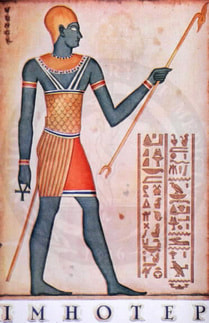 The Renaissance began in Europe in the 15th century and marked the change from the medieval period to the modern world. Towering figures such as Michelangelo, Galileo, and especially Leonardo da Vinci were known as Renaissance men because of their talents and lasting achievements in several important areas of knowledge. They were also accomplished musicians, public speakers, athletes, poets, and so forth. And they were expected to do all this stuff without breaking a sweat. You could give the same title to an ancient Egyptian named Imhotep, who lived about 2600 BCE. He was the vizier, the most important government official, during the reign of Pharaoh Djoser. He served as the high priest of the god Ra and was an expert astronomer. Imhotep designed and oversaw the building of the first major pyramid in Egypt. Located at Saqqara, at the time it was the world’s tallest structure. He innovated the use of stones rather than mud bricks to build it, and it was that added strength that enabled the pyramid to rise so high. He is also credited with the invention of several devices that facilitated the construction. Many people believe that Imhotep, rather than the Greek Hippocrates who lived more than 2,000 years later, is the real “Father of Medicine.” In an era when most physicians relied on magic spells and appeals to the gods, Imhotep prescribed dozens of effective down-to-earth treatments for illnesses and injuries. He is credited with ending a seven-year famine in Egypt. He advised the pharaoh to make sacrifices to Khnum, the god of the annual flooding of the Nile River, and thereby provide desperately needed water to farmers. On a more practical level, he invented an improved irrigation system to carry water to the crops even if the river level was abnormally low. In addition to these accomplishments, an inscription at the base of one of his statues notes that he was “Chief Carpenter, Chief Sculptor, and Maker of Vases in Chief.” In his little spare time, he wrote poetry and dispensed philosophical advice. Imhotep can also boast of two accomplishments that eluded even Leonardo da Vinci. He was deified after his death and worshipped for many centuries, an honor accorded to hardly anyone besides the pharaohs. And today the comic book community gives him the credit for founding S.H.I.E.L.D., the Marvel Comics espionage and crime-fighting agency that became the basis for blockbuster movies such as Iron Man, Thor, and Captain America. 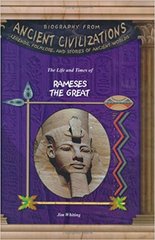 Jim Whiting has written a book on another great Egyptian leader -- Ramses the Great who lived about 1350 years after Imhotep. He fully lived up to the "Great" part of his name. His reign lasted for 67 years, the second longest in Egypt’s 3,000-year history. He had dozens of wives and more than 100 children, outliving many of them. He was a military leader who expanded the borders of his country. That resulted in decades of peace and prosperity for his people. He ordered huge statues of himself to be erected all over Egypt. For more information, click here. MLA 8 Citation
Whiting, Jim. "A Renaissance Man - 4,000 Years before the Renaissance." Nonfiction Minute`, iNK Think Tank, 8 Feb. 2018, www.nonfictionminute.org/the-nonfiction-minute/ A-Renaissance-Man-4,000-Years-Before-the-Renaissance.
0 Comments
 Gigantic earthquakes rocked the Midwestern United States between December 16, 1811, and February 7, 1812. A fault in our continent’s stone base runs beneath the Mississippi River near what is now New Madrid, Missouri. Unequal pressures built up on both sides of this fault and the sides slipped to ease the pressure. Whammo—the first of 3 earthquakes from these slips was felt as far away as New York City, Washington, DC, and Charleston, South Carolina. There were no scientific instruments to measure the New Madrid Quakes in 1812 so geologists have sifted through widespread accounts from old journals and newspapers for data. Putting the accounts together on a map, we know the quakes were felt over an area of 1,930,000 square miles. They earthquakes began with a pair of terrific shocks at 2:15 and 7:15 local time on the morning of December 16, 1811, both measuring 7.2 - 8.1 on the Richter scale. They were followed by a 7.0 - 7.8 quake on January 23, 1812, and a 7.4 - 8.0 event on February 7, 1912. The quakes were violent, earth-shifting events. There have been even more powerful earthquakes in Alaska and Hawaii, both vulnerable to deep geological pressures, But the New Madrid quakes are the largest to ever occur in the original forty-eight states. Yet little damage or loss of life was reported. The region was then part of Louisiana Territory, sparsely inhabited with small villages and only a few multi-story masonry buildings. We can’t know how many log cabins or small home chimneys were thrown down, or how many Native Americans were affected. Coincidentally, the first steam paddle-wheeler on the Mississippi, the New Orleans, invented by Robert Fulton, was making its first trip south during the quakes. Land heaves caused massive waves to travel up and down the river. When the little southbound New Orleans met one of these waves it seemed that the great Mississippi was running backward. Some land rose, riverbanks crumbled, some land subsided and formed new lakes. The river’s course was so changed that maps were useless, and the steamboat did a remarkable job of “feeling its way” through the new channels to dock at New Orleans on January 10, 1812. We’ve come to expect earthquake and volcanic activity around the Pacific “Ring of Fire,” and other hot-spots of geologic shift, but the New Madrid Quake was the product of an unexpected fault in earth’s crust we now call the New Madrid Seismic Zone. And, yes, there is the possibility of similar earthquakes from this zone in the future. The Earth that seems so solid is secretly restless.
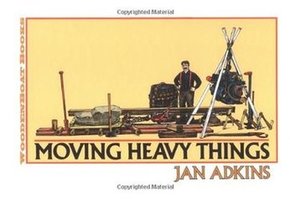 Jan Adkins is not only a writer, but also a wonderful illustrator. His personal website is under construction at the moment, but if you would like to find out more about him and see a list of his very well known books, click here. Adkins is a member of iNK's Authors on Call and is available for classroom programs through Field Trip Zoom, a terrific technology that requires only a computer, wifi, and a webcam. Click here to find out more. MLA 8 Citation Adkins, Jan. "Earthquakes on the Mississippi?" Nonfiction Minute, iNK Think Tank, 25 Sept. 2017, www.nonfictionminute.org/the-nonfiction-minute/earthquakes-on-the-mississippi. 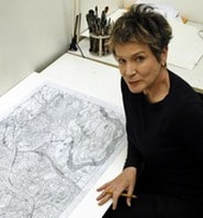 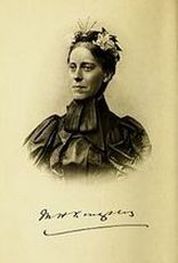 “It is at these times you realize the blessing of a good, thick skirt,” said Mary Kingsley after she crashed into a cleverly concealed leopard pit lined with twelve-inch ivory spikes. The year was 1895, the place Equatorial West Africa, and the spunky lady saved, thanks to her observance to the dress code of the day, was a young Englishwoman collecting species of fish and beetles for the British Museum. Mary Kingsley was the daughter of a physician who spent most of his time traveling. Although she received no formal education (reserved for her brother Charles), Mary learned to read, becoming fascinated with subjects such as science, exploration and piracy. At one point she was granted permission to teach herself German, but only after she could iron a shirt properly. Mary learned chemistry, experimented with gunpowder and electricity, and became engrossed by the intricacies of plumbing. After years of caring for her invalid mother, in 1892 both her parents died. With the small inheritance left to her came the fulfillment of a dream: to explore West Africa. When Mary crashed into the leopard pit, she was traveling in what was then the French Congo, getting to know the Fangs, reportedly a tribe of cannibals. Traveling by canoe, she was once marooned in a crocodile-infested lagoon. When one tried to climb aboard, she was there with a paddle, ready to “fetch him a clip on the snout.” After two trips, she wrote a book called Travels in West Africa. She became a sought-after lecturer and celebrity. In public appearances she was both funny and serious, peppering her narrative with jokes, often at her own expense, but also being critical of the way the British had steamrolled into the African continent, with little regard for its ancient cultures. In 1900 she sailed to Africa for the third time, responding to an urgent call for nurses in South Africa, where war was underway. Assigned to a hospital where hundreds of soldiers were dying from a raging epidemic, she became ill herself, and died two months later. She was buried at sea with military honor. In her book, she remembers: “Indeed, much as I have enjoyed life in Africa, I do not think I ever enjoyed it to the full as I did when dropping down the Rembwe… Ah me! Give me a West African river and a canoe for sheer pleasure.” 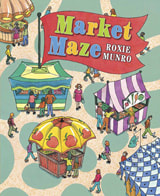 Rave reviews for Roxie Munro's book Market Maze: "A great way to introduce kids to their foods' origins and to prepare them for a greenmarket visit of their own." Kirkus (Starred review!) excerpt. "From a parent’s or teacher’s point of view, here’s a good way for kids to gain the visual discrimination skills needed for reading, while they learn about the sources of food at their local farmers’ markets. For kids, though, the combination of mazes and hidden objects is just plain fun. It’s a winning combination." Booklist review excerpt. Roxie Munro is a member of iNK's Authors on Call so you can meet her face-to-race through interactive videoconferencing. Learn more about her programs here. MLA 8 Citation
Munro, Roxie. "Mary Kingsley." Nonfiction Minute, iNK Think Tank, 15 Mar. 2018, www.nonfictionminute.org/the-nonfiction-minute/Mary-Kingsley. Incoming shell! Whenever ten-year-old Lucy McRae heard that distinctive sound, she froze, allowing the explosive to fly on over her. Then she hurried into the safety of the family’s cave. It was 1863 and Vicksburg, Mississippi, was being bombarded by Union artillery. It was located strategically on the Mississippi River. All along the waterfront, Confederate cannon prevented Union ships from taking control of the river and using it to invade the South. President Lincoln said that for the North to win the war, those cannons must be silenced. He selected General Ulysses Grant to force Vicksburg to surrender. Grant’s army sieged the city of 5,000, cutting off food supplies and fresh water. Then he rained shells day and night on the Confederate troops defending Vicksburg and on its terrified civilians. But townspeople had no intention of giving up. Most of their men were off fighting, but those remaining were stalwart: there would be no surrender. Instead, they dug more than 500 caves into the sides of Vicksburg’s many hills, where they took refuge. Everyone lived side by side, rich and poor, masters and slaves. Cooking tents were set up outside the entrances, and during lulls in shelling, residents hastily prepared whatever food they had. Lucy always stayed outside until the moment shelling started again. The caves were hot, dark, dank, and crowded, and were home to spiders, scorpions, lizards, mosquitoes, and snakes. “It was living like tree roots,” one woman said. People brought in rugs, bedding, books and favorite artwork to make their surroundings more tolerable. Sometimes there were close calls when a shell hit a cave. Once Lucy was buried under a mound of sliding dirt for several minutes. When her frantic mother pulled her out, she gasped for air, her mouth and nose full of dirt. Although the town was severely damaged by the shelling, because of the caves only a dozen people died in the forty-seven-day siege. Townspeople wanted to hold out, but daily rations of water and food were almost gone, forcing the city’ surrender on July 4, 1863. The South’s loss of Vicksburg helped the North win the war. But the bravery of townspeople like Lucy, who held fast in the face of overwhelming odds, was never in dispute.
Howard Pyle painting of terrorized people spotting a rocket shell. Photo of a cave entrance after the siege., Note the unexploded shells.  If you’d like to know more about the Siege of Vicksburg, Andrea Warren tells the whole story of Lucy and other children caught up in that dramatic event in her award-winning book Under Siege! Three Children at the Civil War Battle for Vicksburg. For more on her books, visit her website at AndreaWarren.com. Andrea Warren is a member of Authors on Call. Here's a link to her interactive video conference: What Children Experienced in the Civil War: Three Young People at the Siege of Vicksburg. (Note to teachers: you may have to register at CILC to reach this website. It's free and it's a GREAT resource). MLA 8 Citation
Warren, Andrea. "Living in Caves to Survive the Siege of Vicksburg." Nonfiction Minute, iNK Think Tank, 3 Jan. 2018, www.nonfictionminute.org/Living-in-Caves-to-Survive-the-Siege-of-Vicksburg.  The onset of spring, summer, fall, and winter every year is precisely measured, depending on the sun’s position. But there’s no similar astronomical or scientific reason for celebrating New Years on January 1. Many people don’t. The Chinese New Year occurs on the second new moon after the winter solstice, between late January and mid-February. Muslims mark the occasion on the first day of Muharram, the first month of the Islamic calendar. That calendar is based on the lunar cycle, 11 or 12 days shorter than the solar calendar. So their New Year comes a little earlier every year. Rosh Hashanah, the start of the Jewish New Year, is a two-day observance that begins 163 days after Passover and varies between September 5 and October 5. Unlike other New Year’s celebrations, Rosh Hashanah is holy, a time for piety rather than parties. There was just as much variation in ancient times. In Babylon, the first new moon after the vernal equinox marked the New Year. Egyptians celebrated it in early August, when the annual Nile River flooding began. In Greece, Athens and Sparta couldn’t get along, so their respective new years didn’t occur at the same time. In Athens, it was the first new moon after the summer solstice, while the Spartans waited until early fall. So how did January 1 become the most widely accepted start of the New Year? The answer: Julius Caesar. For centuries, the Roman calendar was in a state of chaos, with the number of days in the year fluctuating widely. In 46 BCE, Caesar worked with the brightest Egyptian astronomers to retool the calendar. He wanted the year to begin on the first of January, a month named after the god Janus. Janus had two faces: one looking backward (at the year just ending) and the other facing forward. For the Romans, it was party time! Caesar didn’t stick around very long after his innovation. On the Ides of March—March 15, 44 BCE—he went to the Roman Senate as usual. While one senator distracted him, others swarmed around him with knives they’d hidden inside their togas, hacking and gashing. He collapsed and died. His calendar proved more durable. When Roman legions conquered new territories, the natives had to adopt the Roman calendar. Every day, especially at the start of the new year, it was a reminder of Roman power. You've been hearing from Jim Whiting almost weekly, so we thought you might want to know more about him. He's an interesting fellow: Children's book author. Acclaimed multi-genre freelance editor. Entertaining and informative classroom visitor. Middle school running coach. Award-winning magazine publisher. Workshop presenter. Sportswriter. Light versifier. E-commerce and e-book writer. Teacher. Runner. World traveler. Sailor. Scuba diver. Photographer. Actor. Patron of the arts. Hometown Hero. And of course Voracious Reader. For more about Jim, read his biography and background. MLA 8 Citation
Whiting, Jim. "Happy New Year--in August?" Nonfiction Minute, iNK Think Tank, 2 Jan. 2018, www.nonfictionminute.org/Happy-New-Year-in-August. |
*NEWS
|
For Vicki Cobb's BLOG (nonfiction book reviews, info on education, more), click here: Vicki's Blog
The NCSS-CBC Notable Social Studies Committee is pleased to inform you
that 30 People Who Changed the World has been selected for Notable Social Studies Trade Books for Young People 2018, a cooperative project of the National Council for the Social Studies (NCSS) & the Children’s Book Council
Categories
All
Abolitionists
Adams Janus
Adaptation
Adaptations
Adkins Jan
Advertising
Aerodynamics
Africa
African American History
African Americans
Africa West
Agriculture
Aircraft
Air Pilots
Air Pressure
Air Travel
Albee Sarah
Alchemy
Alligators
Allusion
American History
American Icons
Amphibians
Amundsen Roald
Anatomy
Ancient
Ancient Cultures
Anderson Marian 1897-1993
Animal Behavior
Animal Experimentation
Animal Intelligence
Animals
Animation
Antarctica
Ants
Apache Indians
Apes
April Fool's Day
Architecture
Argument
Arithmetic
Art
Art Deco
Artists
Arts
Asia
Astronauts
Astronomy
Athletes
Atomic Theory
Audubon Societies
Authors
Autobiography
Automobiles
Aviation
Awards
Bacteria
Baseball
Battuta Ibn
Bears
Beatles
Beavers
Bees
Biodegradation
Biography
Biology
Biomes
Biomimicry
Biplanes
Birds
Black Death
Black History
Blindness
Blizzards
Bombs
Bonaparte Napoleon
Boone Daniel
Botany
Brazil
Bridges
Brill Marlene Targ
Brooklyn Bridge
Brown John
Buffaloes
Building Materials
Butterflies
Caesar
Caesar Julius
Caissons
Calculus
Calendars
Cannibal
Capitals
Caravaggio
Carbon Dioxide
Carnivores
Carson Mary Kay
Cartoons & Comics
Carving (Decorative Arts)
Cascade Range
Castaldo Nancy
Castles
Castrovilla Selene
Cathedrals
Cats
Caves
Celts
Cemeteries
Chemistry
Children's Authors
Child Welfare
China
Choctaw Indians
Christmas
Chronometers
Cicadas
Cinco De Mayo
Ciphers
Circle
Citizenship
Civil Rights
Civil Rights Movements
Civil War
Civil War - US
Climate
Climate Change
Clocks And Watches
Clouds
Cobb Vicki
COBOL (Computer Language)
Code And Cipher Stories
Collard III Sneed B.
Collectors And Collecting
Color
Commerce
Communication
Competition
Compilers
Composers
Computers
Congressional Gold Medal
Consitution
Contests
Contraltos
Coolidge Calvin
Cooling
Corms
Corn
Counterfeiters
Covid-19
Crocodiles
Cryptography
Culture
Darwin Charles
Declaration Of Independence
Decomposition
Decompression Sickness
Deep-sea Animals
Deer
De Medici Catherine
Design
Detectives
Dickens Charles
Disasters
Discrimination
Diseases
Disney Walt
DNA
Dogs
Dollar
Dolphins
Douglass Frederick 1818-1895
Droughts
Dr. Suess
Dunphy Madeleine
Ear
Earth
Earthquakes
Ecology
Economics
Ecosystem
Edison Thomas A
Education
Egypt
Eiffel-gustave-18321923
Eiffel-tower
Einstein-albert
Elephants
Elk
Emancipationproclamation
Endangered Species
Endangered-species
Energy
Engineering
England
Englishlanguage-arts
Entomology
Environmental-protection
Environmental-science
Equinox
Erie-canal
Etymology
Europe
European-history
Evolution
Experiments
Explorers
Explosions
Exports
Extinction
Extinction-biology
Eye
Fairs
Fawkes-guy
Federalgovernment
Film
Fires
Fishes
Flight
Floods
Flowers
Flute
Food
Food-chains
Foodpreservation
Foodsupply
Food-supply
Football
Forceandenergy
Force-and-energy
Forensicscienceandmedicine
Forensic Science And Medicine
Fossils
Foundlings
France
Francoprussian-war
Freedom
Freedomofspeech
French-revolution
Friction
Frogs
Frontier
Frontier-and-pioneer-life
Frozenfoods
Fugitiveslaves
Fultonrobert
Galapagos-islands
Galleys
Gametheory
Gaudi-antoni-18521926
Gender
Generals
Genes
Genetics
Geography
Geology
Geometry
Geysers
Ghosts
Giraffe
Glaciers
Glaucoma
Gliders-aeronautics
Global-warming
Gods-goddesses
Gold-mines-and-mining
Government
Grant-ulysses-s
Grasshoppers
Gravity
Great-britain
Great-depression
Greece
Greek-letters
Greenberg Jan
Hair
Halloween
Handel-george-frederic
Harness Cheryl
Harrison-john-16931776
Health-wellness
Hearing
Hearing-aids
Hearst-william-randolph
Henry-iv-king-of-england
Herbivores
Hip Hop
History
History-19th-century
History-france
History-world
Hitler-adolph
Hoaxes
Holidays
Hollihan Kerrie Logan
Homestead-law
Hopper-grace
Horses
Hot Air Balloons
Hot-air-balloons
Housing
Huguenots
Human Body
Hurricanes
Ice
Icebergs
Illustration
Imagery
Imhotep
Imperialism
Indian-code-talkers
Indonesia
Industrialization
Industrial-revolution
Inquisition
Insects
Insulation
Intelligence
Interstatecommerce
Interviewing
Inventions
Inventors
Irrational-numbers
Irrigation
Islands
Jacksonandrew
Jazz
Jeffersonthomas
Jefferson-thomas
Jemisonmae
Jenkins-steve
Jet-stream
Johnsonlyndonb
Jokes
Journalism
Keeling-charles-d
Kennedyjohnf
Kenya
Kidnapping
Kingmartinlutherjr19291968
Kingmartinlutherjr19291968d6528702d6
Kings-and-rulers
Kings Queens
Kings-queens
Koala
Labor
Labor Policy
Lafayette Marie Joseph Paul Yves Roch Gilbert Du Motier Marquis De 17571834
Landscapes
Languages-and-culture
Law-enforcement
Layfayette
Levers
Levinson Cynthia
Lewis And Clark Expedition (1804-1806)
Lewis Edmonia
Liberty
Lift (Aerodynamics)
Light
Lindbergh Charles
Liszt Franz
Literary Devices
Literature
Lizards
Longitude
Louis XIV King Of France
Lumber
Lunar Calendar
Lynching
Macaws
Madison-dolley
Madison-james
Madison-james
Mammals
Maneta-norman
Maneta-norman
Marathon-greece
Marine-biology
Marine-biology
Marines
Marsupials
Martial-arts
Marx-trish
Mass
Massachusetts-maritime-academy
Mass-media
Mastodons
Mathematics
May-day
Mcclafferty-carla-killough
Mcclafferty-carla-killough
Mckinley-william
Measurement
Mechanics
Media-literacy
Media-literacy
Medicine
Memoir
Memorial-day
Metaphor
Meteorology
Mexico
Mickey-mouse
Microscopy
Middle-west
Migration
Military
Miners
Mississippi
Molasses
Monarchy
Monsters
Montgomery
Montgomery-bus-boycott-19551956
Montgomery-heather-l
Monuments
Moon
Moran-thomas
Morsecode
Morsesamuel
Moss-marissa
Moss-marissa
Motion
Motion-pictures
Mummies
Munro-roxie
Munro-roxie
Musclestrength
Museums
Music
Muslims
Mythologygreek
Nanofibers
Nanotechnology
Nathan-amy
Nathan-amy
Nationalfootballleague
Nationalparksandreserves
Nativeamericans
Native-americans
Native-americans
Naturalhistory
Naturalists
Nature
Nauticalcharts
Nauticalinstruments
Navajoindians
Navigation
Navy
Ncaafootball
Nervoussystem
Newdeal19331939
Newman-aline
Newman-aline
Newton-isaac
New-york-city
Nobelprizewinners
Nomads
Nonfictionnarrative
Nutrition
Nylon
Nymphs-insects
Oaths Of Office
Occupations
Ocean
Ocean-liners
Olympics
Omnivores
Optics
Origami
Origin
Orphans
Ottomanempire
Painters
Painting
Paleontology
Pandemic
Paper-airplanes
Parksrosa19132005
Parrots
Passiveresistance
Patent Dorothy Hinshaw
Peerreview
Penguins
Persistence
Personalnarrative
Personification
Pets
Photography
Physics
Pi
Pigeons
Pilots
Pinkertonallan
Pirates
Plague
Plains
Plainsindians
Planets
Plantbreeding
Plants
Plastics
Poaching
Poetry
Poisons
Poland
Police
Political-parties
Pollen
Pollution
Polo-marco
Populism
Portraits
Predation
Predators
Presidentialmedaloffreedom
Presidents
Prey
Prey-predators
Prey-predators
Prime-meridian
Pringle Laurence
Prohibition
Proteins
Protestandsocialmovements
Protestants
Protestsongs
Punishment
Pyramids
Questioning
Radio
Railroad
Rainforests
Rappaport-doreen
Ratio
Reading
Realism
Recipes
Recycling
Refrigerators
Reich-susanna
Religion
Renaissance
Reproduction
Reptiles
Reservoirs
Rheumatoidarthritis
Rhythm-and-blues-music
Rice
Rivers
Roaringtwenties
Roosevelteleanor
Rooseveltfranklind
Roosevelt-franklin-d
Roosevelt-theodore
Running
Russia
Safety
Sanitation
Schwartz David M
Science
Scientificmethod
Scientists
Scottrobert
Sculpture
Sculpturegardens
Sea-level
Seals
Seals-animals
Secretariesofstate
Secretservice
Seeds
Segregation
Segregationineducation
Sensessensation
September11terroristattacks2001
Seuss
Sextant
Shackletonernest
Shawneeindians
Ships
Shortstories
Silkworms
Simple-machines
Singers
Siy Alexandra
Slavery
Smuggling
Snakes
Socialchange
Social-change
Socialjustice
Social-justice
Socialstudies
Social-studies
Social-studies
Sodhouses
Solarsystem
Sound
Southeast-asia
Soybean
Space Travelers
Spain
Speech
Speed
Spiders
Spies
Spiritualssongs
Sports
Sports-history
Sports-science
Spring
Squirrels
Statue-of-liberty
STEM
Storms
Strategy
Sugar
Sumatra
Summer
Superbowl
Surgery
Survival
Swanson-jennifer
Swinburne Stephen R.
Synthetic-drugs
Taiwan
Tardigrada
Tasmania
Tasmanian Devil
Tasmanian-devil
Technology
Tecumsehshawneechief
Telegraph-wireless
Temperature
Tennis
Terrorism
Thomas Peggy
Thompson Laurie Ann
Time
Titanic
Tombs
Tortoises
Towle Sarah
Transcontinental-flights
Transportation
Travel
Trees
Trung Sisters Rebellion
Tundra
Turnips
Turtles
Typhoons
Underground Railroad
Us-environmental-protection-agency
Us History
Us-history
Ushistoryrevolution
Us History Revolution
Us-history-war-of-1812
Us Presidents
Ussupremecourtlandmarkcases
Vacations
Vaccines
Vangoghvincent
Vegetables
Venom
Vietnam
Viruses
Visual-literacy
Volcanoes
Voting-rghts
War
Warne-kate
Warren Andrea
Washington-dc
Washington George
Water
Water-currents
Wax-figures
Weapons
Weather
Weatherford Carole Boston
Whiting Jim
Wildfires
Winds
Windsor-castle
Wolves
Woman In History
Women
Women Airforce Service Pilots
Women-airforce-service-pilots
Womeninhistory
Women In History
Women-in-science
Women's History
Womens-roles-through-history
Wonder
Woodson-carter-godwin-18751950
World-war-i
World War Ii
World-war-ii
Wright Brothers
Writing
Writing-skills
Wwi
Xrays
Yellowstone-national-park
Zaunders Bo
ArchivesMarch 2021
February 2021
January 2021
December 2020
November 2020
October 2020
September 2020
June 2020
May 2020
April 2020
March 2020
February 2020
January 2020
December 2019
October 2019
September 2019
August 2019
July 2019
May 2019
April 2019
March 2019
February 2019
January 2019
December 2018
November 2018
September 2018
June 2018
May 2018
April 2018
March 2018
February 2018
January 2018
December 2017
November 2017
October 2017
September 2017
March 2017
The NONFICTION MINUTE, Authors on Call, and. the iNK Books & Media Store are divisions of iNK THINK TANK INC.
a 501 (c) (3) nonprofit corporation. To return to the iNK Think Tank landing page click the icon or the link below. :
http://inkthinktank.org/
For more information or support, contact thoughts@inkthinktank.org
For Privacy Policy, go to
Privacy Policy
© COPYRIGHT the Nonfiction Minute 2020.
ALL RIGHTS RESERVED.
This site uses cookies to personalize your experience, analyze site usage, and offer tailored promotions. www.youronlinechoices.eu
Remind me later
Archives
March 2023
February 2023
January 2023
December 2022
November 2022
October 2022
September 2022
June 2022
May 2022
April 2022
March 2022
February 2022
January 2022
December 2021
November 2021
September 2021
April 2021
March 2021
February 2021
November 2020
October 2020
September 2020
June 2020
May 2020
April 2020
March 2020
February 2020
January 2020
October 2019
August 2019
July 2019
May 2019
April 2019
December 2018
September 2018
June 2018
May 2018
March 2018
February 2018
January 2018
December 2017
November 2017
October 2017
September 2017


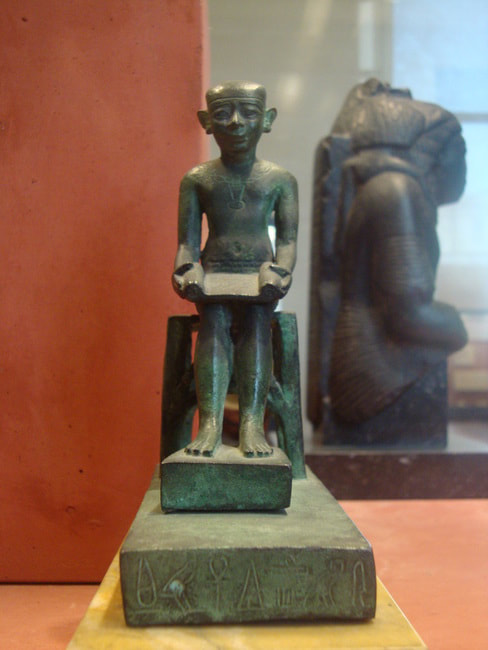
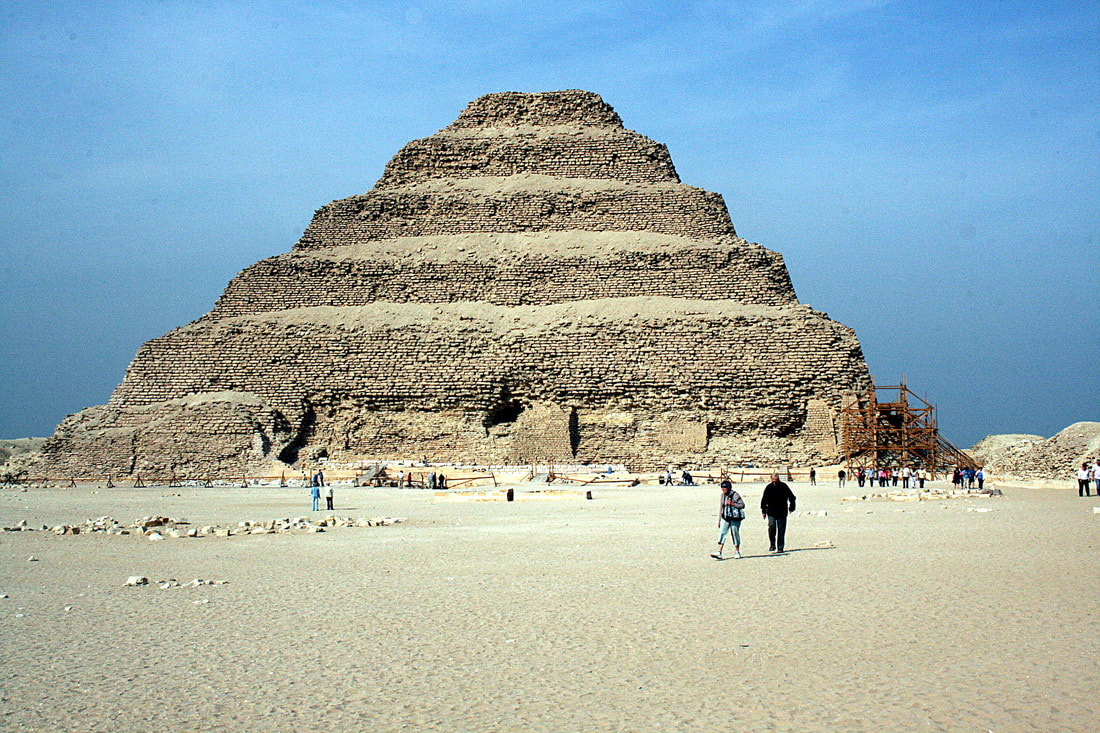


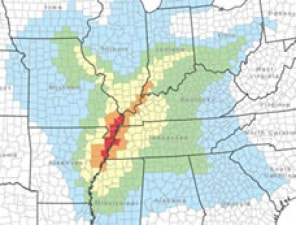
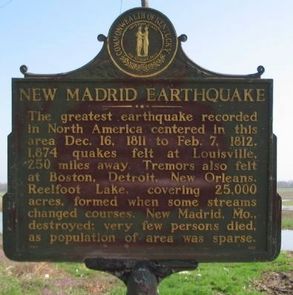
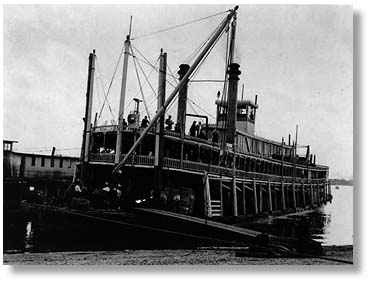
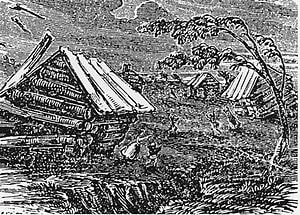


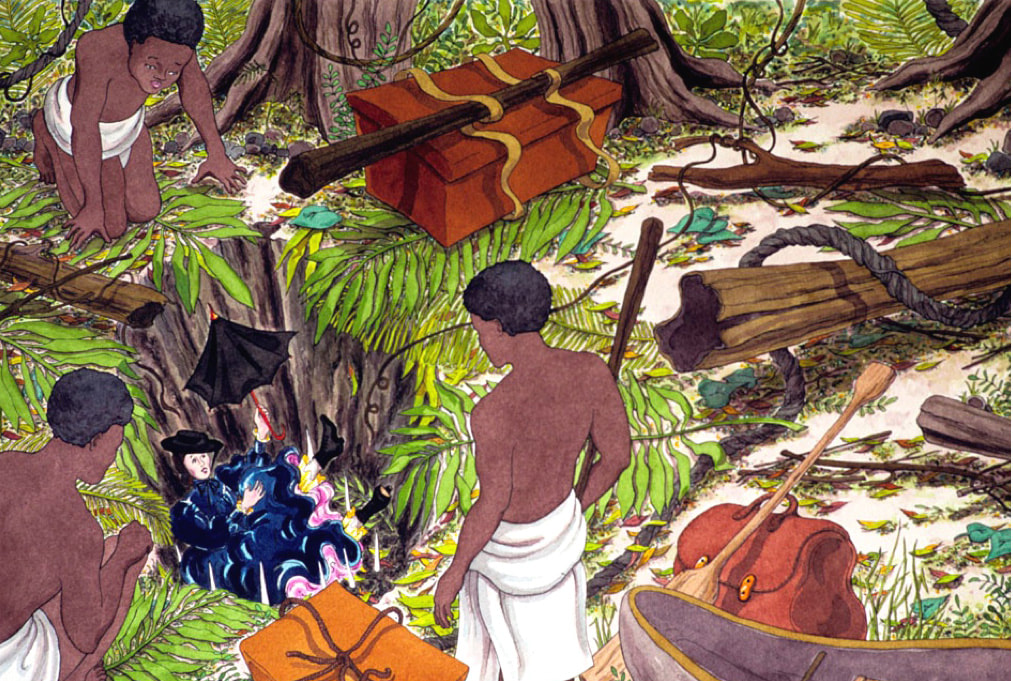
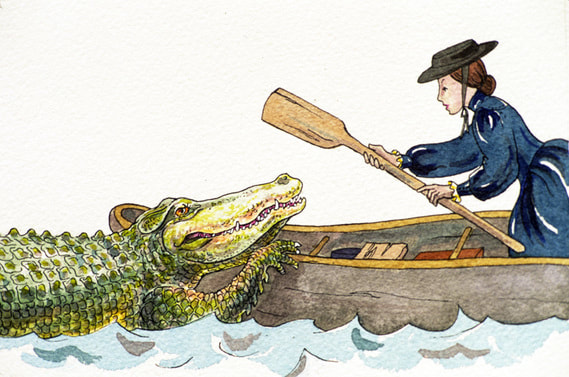
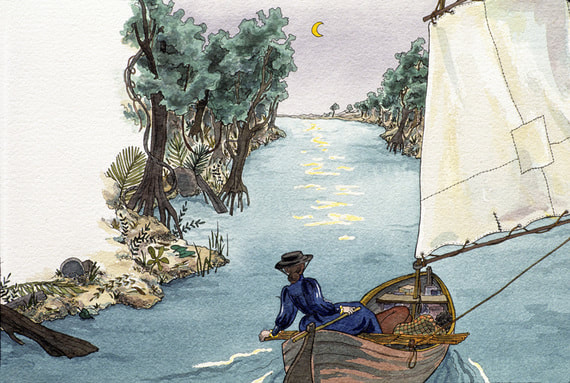




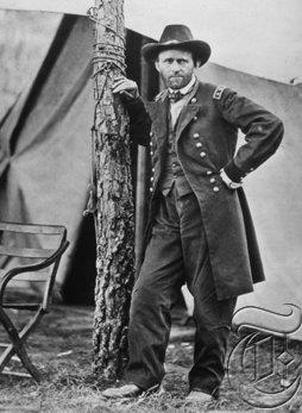
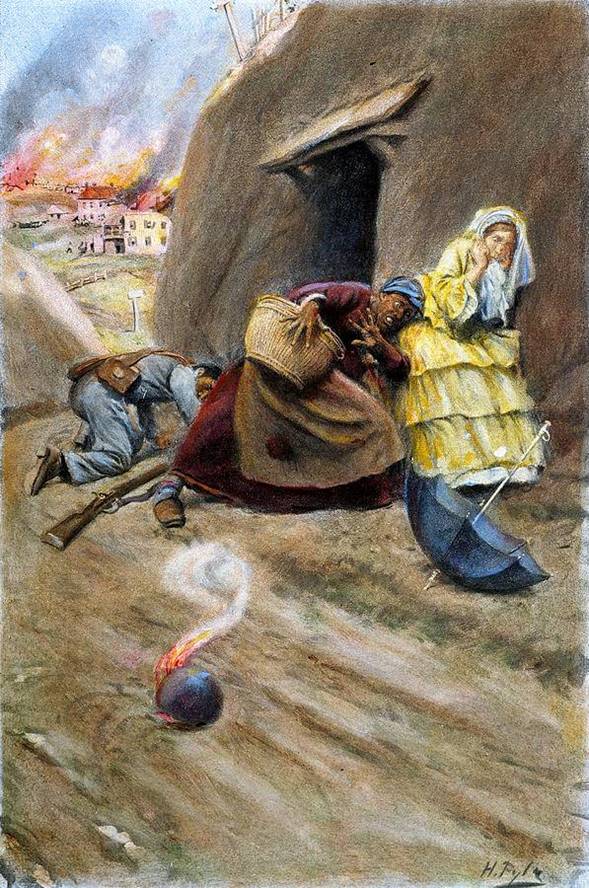
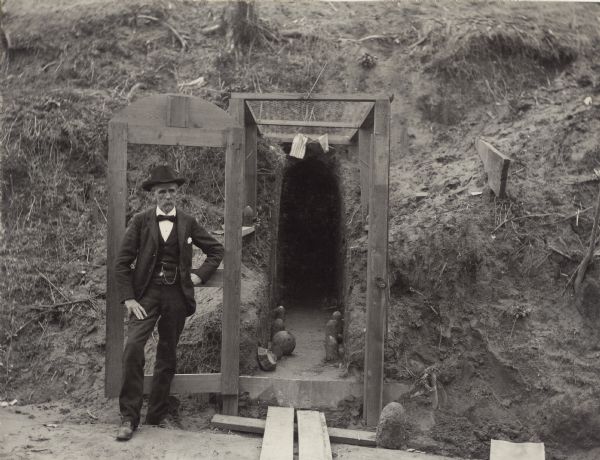


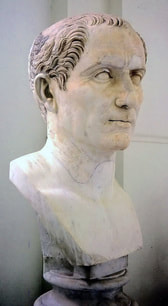
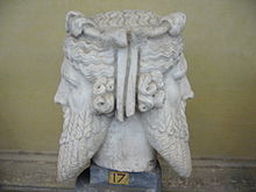
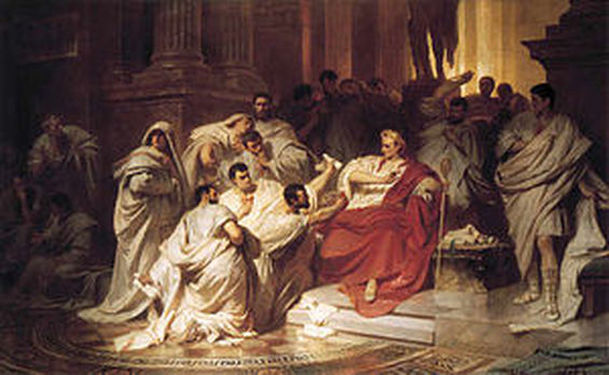
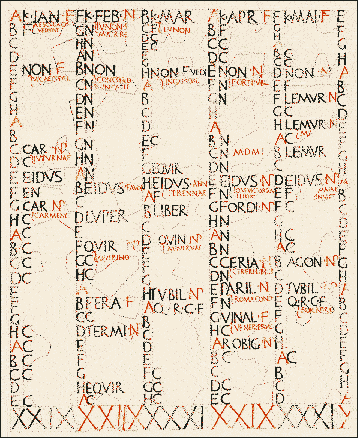

 RSS Feed
RSS Feed
